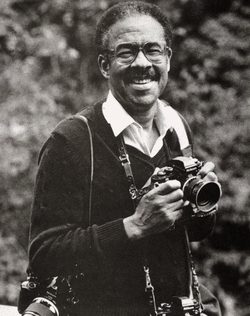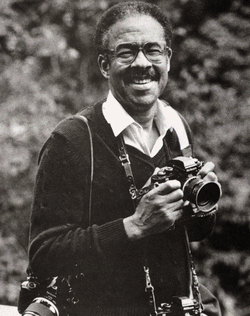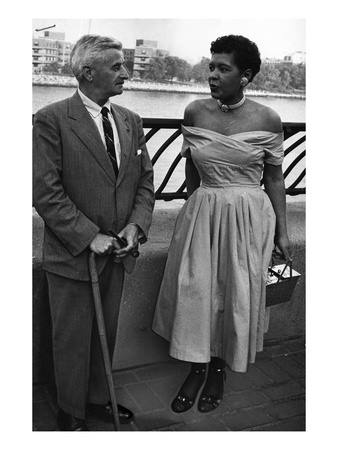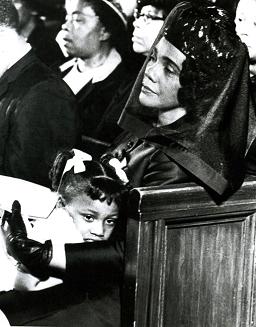

Moneta Sleet Jr. captured many of the images that defined the struggle for racial equality in the United States and Africa.. He is best known for his Pulitzer Prize-winning photograph of the funeral of the Rev. Dr. Martin Luther King Jr.From the time Ebony magazine sent hm to Montgomery, Ala., in 1955 to cover a boycott organized by a young minister named Martin Luther King Jr. until long after he captured what became the signature moment of Dr. King’s funeral in Atlanta in 1968, Mr. Sleet was a gentle, ubiquitous presence in the civil rights struggle in the United States and a fixture at independence ceremonies and celebrations in Africa.
In a profession whose practitioners are expected to bring a certain detachment to their work, Mr. Sleet saw no reason to apologize for his commitment to the cause he covered or for his emotional involvement with those he photographed. ”I wasn’t there as an objective reporter,” he once said. ”I had something to say and was trying to show one side of it. We didn’t have any problems finding the other side.”
In the era of civil rights marches, Mr. Sleet tended to march double-time, once estimating that he had walked 100 miles during the 50-mile march from Selma to Montgomery in 1965 because he kept walking back and forth along the line of march to take photographs.
Mr. Sleet was a native of Owensboro, Ky., and his father was the business manager at Western Kentucky State College in Paducah. He got his first box camera as a child but did not think of becoming a professional photographer until he went to Kentucky State College in Frankfort. Initially a business major, he decided to switch to photography after getting a job as an assistant at a commercial studio operated by a college dean.

Mr. Sleet, whose education was interrupted by Army duty in World War II, later buy viagra 007 studied at the School of Modern Photography in New York and received a master’s degree in journalism from New York University. After a brief stint as a sportswriter for The Amsterdam News in 1950, he joined Our World, a popular black picture magazine. When it folded in 1955, he joined Ebony, the black-owned monthly based in Chicago.
Although he was based in New York, Mr. Sleet spent a good deal of his career on the road, photographing virtually every black head of state in Africa, for example, and crisscrossing the South with Dr. King and other civil rights leaders.
In 1968, when Mrs. Coretta Scott King learned that the small pool of photographers covering her husband’s funeral did not include a black photographer, she sent out word that if Mr. Sleet were not allowed in the church and given a choice vantage point, there would be no photographers.
In the end, Mr. Sleet, who had also been chosen to cover Dr. King’s receipt of the Nobel Peace Prize in Oslo, had what turned out to be the best position of all. His photograph showing Dr. King’s 5-year-old daughter, Bernice, lying across her mother’s lap and looking hauntingly toward the camera was considered such a powerful image that it was transmitted nationwide by The Associated Press and won Mr. Sleet a Pulitzer Prize for journalism, the first received by a black journalist.

For all his pictures of celebrities and famous events, like the 1963 march on Washington, Mr. Sleet always had an eye for the quiet moment and the little people, especially children, and a certain sense of history.
When an exhibition of his work was assembled in 1986 and displayed at major museums, along with the pictures of the likes of Mohammed Ali, Haile Selassie, Stevie Wonder, Jomo Kenyatta and Billie Holiday was one of a sign in Florida advertising a coin laundry as ”especially for colored folks.”
‘
